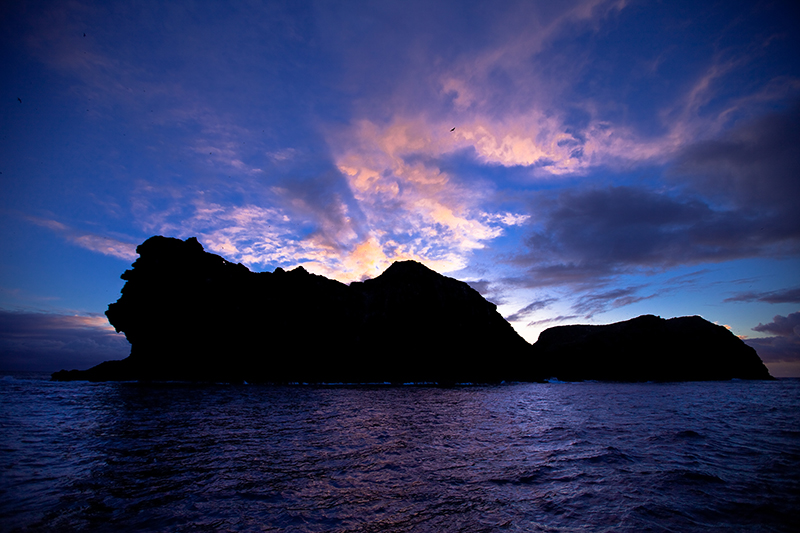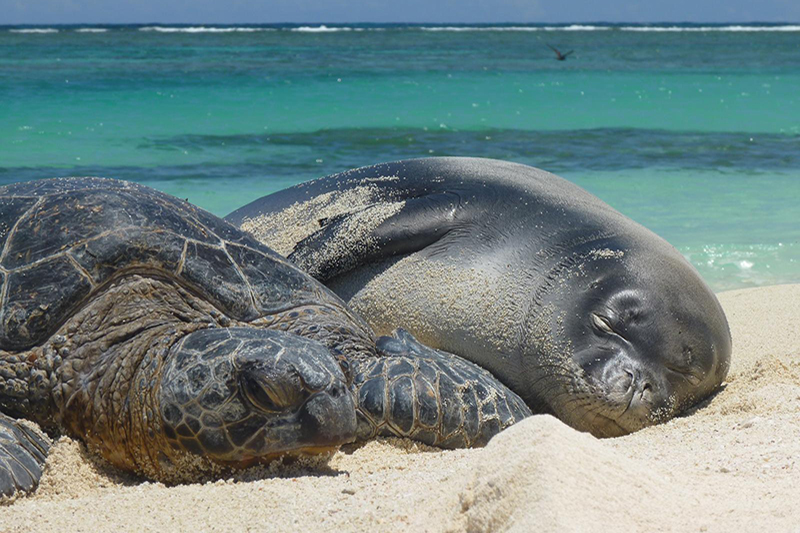Beyond the Blue: Papahānaumokuākea Mapping
(EX2403, EX2404, EX2501)
Papahānaumokuākea
Papahānaumokuākea Marine National Monument, the site for exploration during the Beyond the Blue: Papahānaumokuākea Mapping expeditions, is the largest contiguous fully protected conservation area under the U.S. flag and one of the largest marine conservation areas in the world. It encompasses 1,508,870 square kilometers (582,578 square miles) of the Pacific Ocean, an area larger than all the country's national parks combined. It is a mixed (natural and cultural) World Heritage Site, the first mixed site in the United States and the second World Heritage Site in Hawaii.

The name Papahānaumokuākea commemorates the union of two Hawaiian ancestors – Papahānaumoku and Wākea – who gave rise to the Hawaiian Archipelago, the taro plant, and the Hawaiian people.
Papahānaumokuākea is considered a sacred area, from which Native Hawaiians believe all life springs, and to which spirits return to after death. There are many wahi pana (places of great cultural significance and practice) which, like a lei, are strung together throughout the expanse of the ten main atolls and islands. Papahānaumokuākea, also referred to as the Kūpuna islands (elder islands), represents the living relationship of kanaka ʻōiwi (Native Hawaiians) to these islands as part of the Hawaiian universe and directly connected to knowledge systems and practices central to cultural identity.
The monument’s 1,350-mile stretch of coral islands, seamounts, banks, and shoals supports an incredible diversity of coral, fish, birds, marine mammals, and other flora and fauna, many of which are unique to the Hawaiian Island chain. Many of the islands and shallow-water environments are important habitats for rare species such as the threatened green turtle and the endangered Hawaiian monk seal, as well as the 14 million seabirds representing 22 species that breed and nest there.

Papahānaumokuākea is also home to a variety of post-Western-contact historic resources, such as those associated with the Battle of Midway and 19th century commercial whaling.
Various protection efforts in the region have been enacted over the century, beginning in 1903 when President Theodore Roosevelt sent in the U.S. Marines to stop the slaughter of seabirds for feathers and eggs at Midway Atoll. Over the next 100 years, six U.S. presidents and one Hawai'i Governor afforded the region increasing protection. National marine sanctuary designation is being considered for the marine portions of the monument, which will add to existing monument management measures and protections.
Papahānaumokuākea Marine National Monument is administered jointly by four co-trustees – the Department of Commerce, the Department of the Interior, the State of Hawai'i, and the Office of Hawaiian Affairs.
Published July 3, 2024